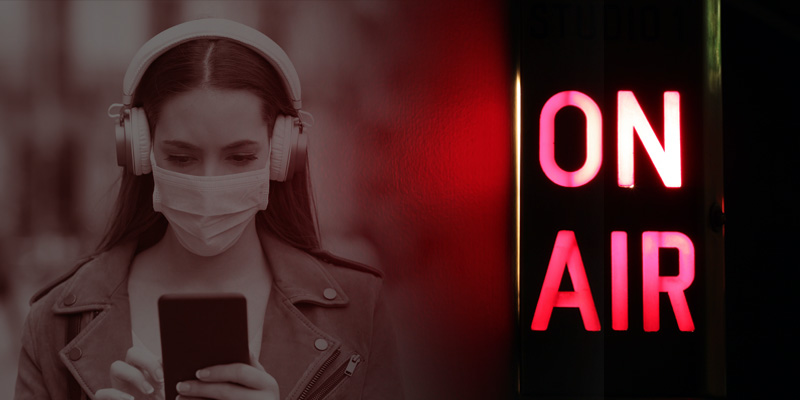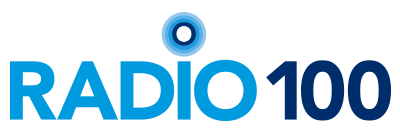
As the COVID-19 pandemic spread across the United States, radio stations across the country moved quickly to focus their programming on news, emergency information and resources related to the crisis. We spoke to Levi May, director of Branding and Programming at KRMG Tulsa, about how daily life at a local radio station has changed in the wake of the coronavirus.
When you realized coronavirus was spreading to the U.S., what actions did you take to pivot your programming?
KRMG started to pivot when the coronavirus spread into the U.S. and doubled down before the coronavirus took its first life in Oklahoma. We instantly did local daily specials (“Coping with Coronavirus”), weekend specials and one hour a week, we took all the local morning talent from not only KRMG, but our sister stations’ morning shows from KWEN, KRAV and KJSR and talked to our community together during the “Home Mic Hour.” We were able to open the phone lines, laugh, cry, console and inform our audiences about what was happening right here in our community.
KRMG has always had great two-way interaction with our listeners due to the Open Mic feature on the KRMG app. It allows the listener to send the station 15-second audio clips instantly, on any topic we are discussing at the moment. And boy, did our audience react and continuously send in open mics on this topic, which we play back, from all different political backgrounds, theories, questions and ideas. It’s something that we will be archiving for when historians want to look back to this period. Our audio will be there for their ears to absorb.
Our news, talk, imaging, push alerts and guests all changed daily to reflect this topical event. KRMG builds very tight relationships with our local, state and federal leaders, and we go directly to the source to inform our audience about the goings-on. We also tapped into the local medical community much more heavily than in the past, and with much more frequency, to stay up-to-date. We also aired every press conference on-air and shared them on our social media platforms when coronavirus hit Oklahoma, and continued until the state started to open up in phases and our data showed we were in a recovery period.
How has day-to-day work changed for you and your colleagues since stay at home orders were put in place?
KRMG was well ahead of the curve when the coronavirus hit the U.S. We have a sister TV affiliate, KIRO-TV, in Seattle, and we were seeing what they were going through within their city and state. Not too long after, it made its way to middle America.
Before the coronavirus made its impact in our community, the engineering and IT team and the KRMG morning news team worked tirelessly to put together strong business continuity plans to broadcast remotely from their own homes to protect our team members. We are blessed with a plethora of studios, so other team members from different dayparts were self-contained in their studios and away from others. Master control was one studio that we needed to do shift changes for, and we created a vigorous cleaning ritual that each team member completed before and after their shifts. Masks, gloves and cleaning supplies were all supplied to our team. Extra sanitation stations were added to the building as well as a six-foot distance policy with proper distance measurements throughout our hallways. The very first death in Oklahoma was in Tulsa County, where KRMG is based. It was on March 19. This was also the same date the KRMG Morning News started broadcasting remotely. It was a blip on the radar of what was yet to come for our community.
How have your on-air hosts’ interactions and relationships to their callers and audiences changed?
Deeper, more compassionate and more kind. This is a very hotly contested topic, which has turned political, even down to wearing or not wearing a mask. Kindness rises to the top and we’ve become more connected with our audience. In the time of a pandemic, if you were to build a station to handle a time like this, it would be KRMG. We are built for times like these. The audience responded in high numbers as well. I can’t remember the last time one of our top average quarter hour listeners was too young to qualify for KRMG’s demo. This pandemic brought many new ears to KRMG and we made sure we delivered what they were craving, that they couldn’t get anywhere else.
How do you think local radio stations can best support their communities during this crisis?
Keywords: local, inform, listen and support. The entire world has been impacted by this virus, but what matters is that radio stations do what they were intended to do. Every station needs to connect with its local community and support its community.
During this marathon, we might be in our most trying times because we don’t know what is going to happen next, especially if we see another spike around the world. Continue updating locally, inform your audience, listen to your audience and support your community. And while you update your audience, make sure you tell them the good that has come out of the pandemic. We are inundated with coronavirus information; there are good stories out there to share with everyone.
And make sure to listen to your team members. We all too often focus on the world around us when we need to be looking in and making sure we are taking care of one another. Look inward, move shifts around, allow those on your local team to host special programming and simply talk to your community. People are looking for a trusted outlet in this world filled with misinformation and you and your team can rise to the occasion, no matter the format, and lead by example. And always listen. This is no longer the “one to many” medium, it’s a two-way street. This is something that can put your station on the map in your local market and your market will remember you for it. God bless every single one of you reading through this article graciously put together by NAB; I know you truly care about local radio and will do your best to super-serve your community.
For 100 years, broadcast radio has been delivering the moments, big and small, that bring our communities together. Share your favorite radio memory using #Radio100 in recognition of this centennial year.

November 2, 2020 marks the 100th anniversary of the first commercial radio broadcast. To celebrate this special anniversary, we’re shining a spotlight on 100 key moments in radio's history.
We hope you’ll join us in celebrating your favorite radio memories throughout 2020. Use the hashtag #Radio100 across social media to share these moments with the world. Here’s to 100 wonderful years of radio, and to at least 100 more!